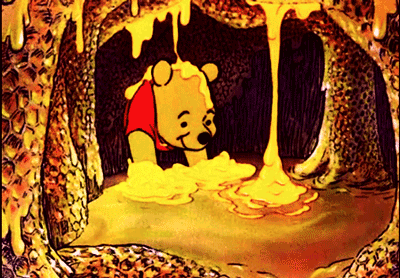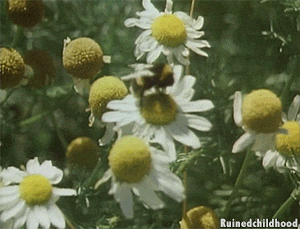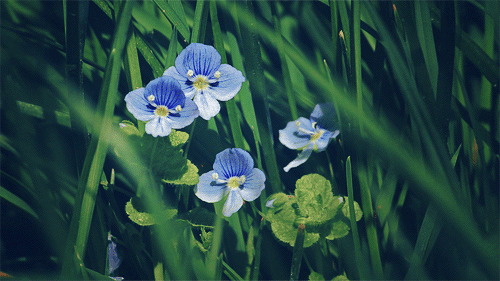Why did the bees go on strike? Because they wanted more honey and shorter working flowers!
Bees are one of nature's great pollinators. From the fruit and vegetables on our table, to the wildflowers and gum trees they forage on, honeybees help pollinate of our flora. This in turn helps to keep the whole ecosystem in working order. Great! But in the past decade, colonies of bees have been disappearing, literally. Bee colonies will be thriving, and then in a matter of weeks there will be no bees left in a hive, no corpses, and no obvious sign of disease. It's known as colony collapse disorder and has had a devastating effect on European and North American bees, which have declined by about 30%. So, are we headed for an international beepocalypse? Is Australia safe? Why do bees even matter?
The bee's knees
Honeybees are considered by some as the most economically valuable animal in the world. Why? Worldwide, Bees pollinate one-third of what we eat. They pollinate crops for livestock feed, the cotton, and the coffee industry. And certain crops will decrease their yield by 90% without the assistance of bee pollination. Let's not forget that bees make honey, which is delicious and is the only known food that never spoils.

Closer to home, 65% of Australian agricultural production relies on pollination by European honeybees, with 35 of our industries depending on honeybee pollination for most of their production
It's not just about the human population. Bees pollinate seeds, fruits, and berries, which are eaten by small birds and mammals; their pollination aids the beginning of the food chain. Without it, plants would lose their ability to reproduce, and whole ecosystems would fall apart.

Beemageddon!
So what's the issue? Around 2006, the term colony collapse disorder (CCD) started being thrown around the apiculture scene after it was noted that there was a drastic rise in the disappearance of bee species worldwide. There are varied theories as to what was behind the cause of CCD. I spoke to Vicky Brown of Sydney's Urban Beehive who says it boils down to a few things, "One problem facing beekeepers and bees is the loss of flora. In Tasmania, areas with Leatherwood trees (which are only found in the one region) are being logged. This is impacting on the producers of Australia's distinctive and much sought after Leatherwood honey".
Climate change is also thought to be responsible for the decline of the bee population. Researchers out of Queen's university in Belfast have found that exotic parasites, which did not previously thrive in the UK, are invading its borders and devastating bee colonies. "Our results reveal not only that the exotic parasite is a better competitor than its close relatives, but that its widespread distribution and patterns of prevalence in nature depend on climatic conditions too," said researcher Myrsini Natsopoulou to Nature World News.
The Varroa mite, A pin-sized parasite that attaches itself to bees and their larvae, feeding off their blood. Has been known to beekeepers since the 1950's and after being found initially in Northern Asia, has steadily been making its way across the globe. Vicky says that Australia is fortunate enough in that we don't yet have large-scale infestations of Varroa. However, "Australian beehives are vulnerable to pesticide use," she says.
Pesticide exposure is almost guaranteed in the life of a bee, often to insecticides known as neonicotinoids, which are commonly sprayed on crops. The exposure effect neonicotinoids have on bees range from sudden death to paralysis, to inhibition of performance in tasks such as reproduction and foraging. It is also suggested that pesticides that don't outright kill the bee can have a cumulative effect on their systems.
Finally, closer to home, Australian scientists out of Macquarie University are suggesting that our honeybees are chronically stressed. Worker bees, which live for about six weeks, usually spend the first two-three weeks of their life inside the hive, waiting to reach maturation. So when too many of the hive's worker bees are killed by the previously mentioned pests, pesticides, and lack of flora, a mass maturation off the underdeveloped bees takes place and underage bees are sent out into the workforce early. Foraging for pollen is a tough grind, the bees get lost and often die from exhaustion. It'd be like sending a toddler to run a marathon through crowded unmarked streets.
Dr Andrew Barron, who led the study, told SMH,
"Bees who start to forage when they've been adults for less than two weeks are just not good at it. They take longer, and they complete fewer trips." This extinction/early maturation trend becomes a cycle in which the death of the previous generation pushes the next generation into work, they're too young to handle the workload, they also die, and so the cycle repeats.
"Our model suggests bees are very good at buffering against stress, but there's a tipping point and then you see this rapid transition into complete societal failure"- Dr Barron
Now what?
If you want to help our buzzing buddies in your backyard, then there's lots you can do to make your garden bee-friendly. Bees love flowers of the blue, purple, and yellow variety. Think borage, sunflowers, and tree dahlia. Bees are also mad for herbs - especially oregano, sage, thyme, and lavender.

Alternatively you could host a hive in your backyard, business, or balcony. The Urban Beehive can install and manage a beehive in your space, and then when its time to harvest the honey they'll give you a share of the spoils. There are similar organisations in Brisbane, Melbourne, and Canberra. Or, you could by a bag of bees and do it all yourself!
For farmers or at home gardening enthusiasts, you can look to sustainable farming practices that don't don't use harmful insecticides like neonicotinoids.
The concept of colony collapse disorder seems to have supporters and deniers. Some say it's a natural species progression, highlighting the fact that we haven't yet run out of honey, and there are still bees buzzing about, so all must be well. Others say the way we interact with and shape our environment is seriously detrimental to the health, wellbeing, and food sources of honeybees. Either way you look at it, we are heavily dependent on their pollinating abilities across more than just the food industries. So go on, help a bee, plant a flower.
READ THIS NEXT: Plant like a professional with this vegetable growing cheat sheet.

